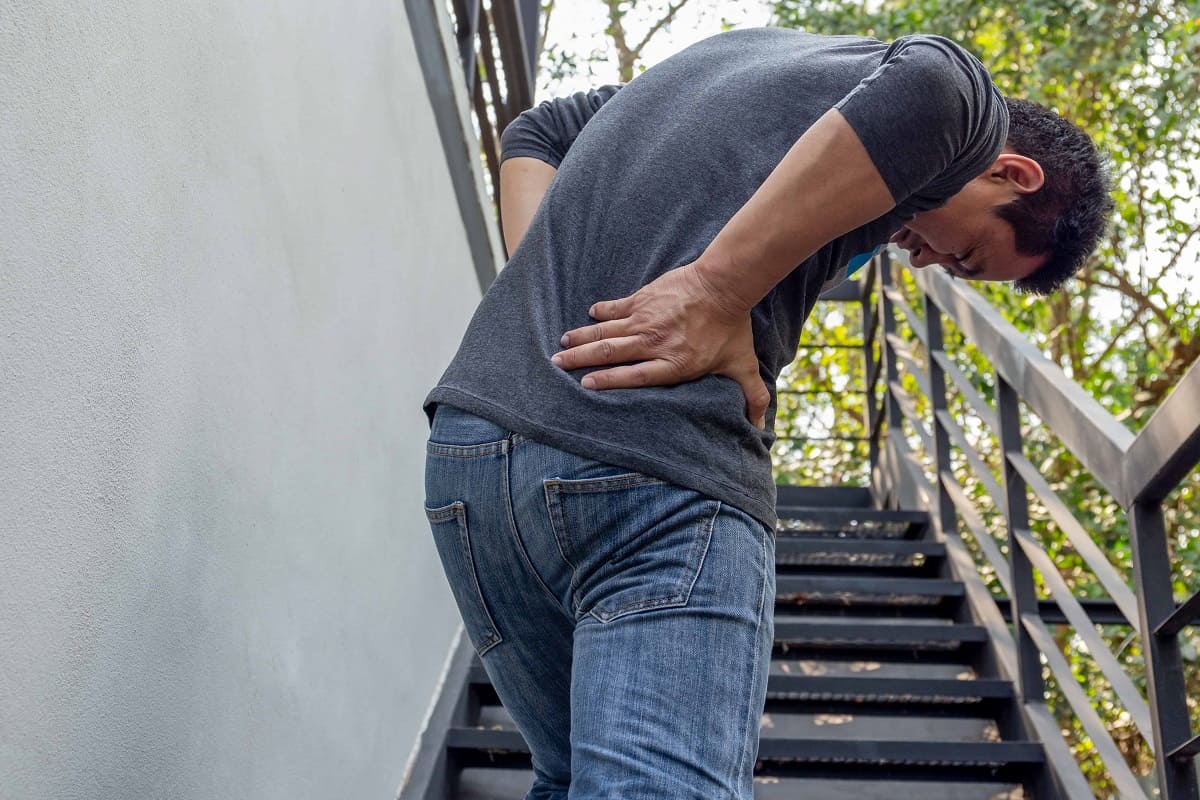

Articles
Hip Pain When Going Up Stairs
Modified: December 7, 2023
Discover helpful articles on how to alleviate hip pain when going up stairs. Get expert tips and advice to improve your mobility and reduce discomfort.
(Many of the links in this article redirect to a specific reviewed product. Your purchase of these products through affiliate links helps to generate commission for Storables.com, at no extra cost. Learn more)
Introduction
Hip pain can be a debilitating condition that affects your daily activities, making simple tasks like going up stairs a painful and challenging ordeal. Whether you experience a sharp, stabbing pain or a dull ache in your hip, it can significantly impact your quality of life. Understanding the possible causes of hip pain when going up stairs is crucial for accurate diagnosis and effective treatment.
There are numerous potential factors that can contribute to hip pain when ascending stairs. It is essential to consult with a healthcare professional to determine the specific cause in your case. In this article, we will explore some of the common causes of hip pain when going up stairs and discuss various treatment options and prevention tips.
Key Takeaways:
- Hip pain when going up stairs can be caused by various factors such as muscle strain, arthritis, and bursitis. Treatment options include rest, physical therapy, and pain medication, with surgical intervention as a last resort.
- Prevention tips for hip pain when going up stairs include maintaining a healthy weight, engaging in regular exercise, practicing proper body mechanics, and using appropriate footwear. Consulting with a healthcare professional is crucial for accurate diagnosis and treatment.
Read more: Leg Pain When Going Up Stairs
Possible Causes of Hip Pain When Going Up Stairs
1. Muscle Strain: One common cause of hip pain when ascending stairs is a muscle strain. Overexertion, sudden movements, or improper form while exercising can strain the muscles around the hip joint, leading to pain and discomfort.
2. Hip Flexor Tightness: Tight hip flexor muscles can also contribute to hip pain when going up stairs. The hip flexors are a group of muscles located at the front of the hip joint. When these muscles become tight and shortened, it can cause pain and limited range of motion.
3. Arthritis: Arthritis is a chronic condition that can affect the hip joint, leading to pain, stiffness, and difficulty with movements such as climbing stairs. Osteoarthritis, rheumatoid arthritis, and traumatic arthritis are some forms of arthritis that can affect the hip.
4. Bursitis: Hip bursitis occurs when the bursae, small fluid-filled sacs that cushion the joints, become inflamed. This inflammation can lead to hip pain when climbing stairs or performing other activities that involve repetitive movements of the hip.
5. Labral Tear: The labrum is a ring of cartilage that surrounds the hip socket and helps to stabilize the joint. Injuries or degeneration of the labrum can cause hip pain, especially when going up stairs or engaging in activities that involve twisting or pivoting of the hip.
6. Trochanteric Pain Syndrome: Trochanteric pain syndrome is characterized by pain and tenderness on the outer side of the hip. It can be caused by inflammation of the bursa or tendonitis of the gluteal muscles. Climbing stairs can exacerbate the pain in individuals with this condition.
7. Hip Impingement: Hip impingement, also known as femoroacetabular impingement, occurs when there is abnormal contact between the ball and socket of the hip joint. This can lead to pain and reduced mobility, particularly when engaging in activities that require deep hip flexion, such as stair climbing.
8. Hip Fracture or Stress Fracture: In severe cases, hip pain when going up stairs may be due to a hip fracture or stress fracture. These injuries can occur as a result of trauma or repetitive stress on the hip joint, respectively.
It is important to note that this list is not exhaustive, and there can be other causes of hip pain when climbing stairs. Consulting with a healthcare professional is crucial to accurately diagnose the underlying cause and develop an appropriate treatment plan.
Muscle Strain
Muscle strain is a common cause of hip pain when going up stairs. It occurs when the muscles around the hip joint are overstretched or torn. This can happen due to various reasons, such as overexertion, sudden movements, or improper form while exercising.
When you strain a muscle, you may experience symptoms such as pain, tenderness, swelling, and restricted range of motion. The pain is often sharp and localized to the affected area. In the case of a hip muscle strain, the pain is typically felt in the buttocks, hip, or groin region.
Several muscles around the hip can be prone to strain, including the hip flexors, gluteal muscles, and adductor muscles. These muscles are responsible for providing stability to the hip joint and facilitating its movement.
Treatment for a muscle strain typically involves a combination of rest, ice, compression, and elevation (RICE). Resting the affected muscle helps to prevent further injury and allows the healing process to take place. Applying ice to the area can help reduce inflammation and alleviate pain. Compression with an elastic bandage and elevating the leg can also aid in reducing swelling.
In addition to RICE, gentle stretching and strengthening exercises may be recommended by a healthcare professional. Physical therapy can be beneficial in facilitating the healing process and restoring strength and mobility to the injured muscles.
Pain medication, such as nonsteroidal anti-inflammatory drugs (NSAIDs), may be recommended to manage pain and reduce inflammation. However, it is important to follow the guidance of a healthcare professional and use medication responsibly.
Prevention is key to avoiding muscle strains. Engaging in a proper warm-up routine before exercise can help prepare the muscles for activity and reduce the risk of strain. It is important to maintain good posture and use proper form while performing physical activities to minimize strain on the muscles and joints.
If you experience hip pain when going up stairs and suspect a muscle strain, it is crucial to consult with a healthcare professional for an accurate diagnosis and appropriate treatment plan. Ignoring or mismanaging a muscle strain can lead to further complications and prolonged recovery time.
Hip Flexor Tightness
Hip flexor tightness is another common cause of hip pain when going up stairs. The hip flexors are a group of muscles located at the front of the hip joint, including the iliopsoas and rectus femoris muscles. These muscles play a crucial role in flexing the hip, allowing you to lift your leg and move it forward.
When the hip flexor muscles become tight and shortened, it can lead to hip pain, especially when engaging in activities that require deep hip flexion, such as climbing stairs. Tight hip flexors can result from prolonged periods of sitting, excessive exercise without proper stretching, or muscular imbalances in the hip and surrounding areas.
Individuals with hip flexor tightness may experience symptoms such as pain and discomfort in the front of the hip or groin area. They may also have limited range of motion and difficulty fully extending the hip when walking or going up stairs.
Treatment for hip flexor tightness aims to stretch and lengthen the tight muscles, improving flexibility and reducing pain. Gentle stretching exercises, such as lunges, kneeling hip flexor stretches, and butterfly stretches, can help loosen the hip flexors.
In addition to stretching, strengthening exercises for the opposing muscles, such as the gluteal muscles and hamstrings, can help restore muscular balance around the hip joint. This can alleviate strain on the hip flexors and reduce pain when climbing stairs.
Physical therapy is often recommended for individuals with hip flexor tightness. A physical therapist can provide targeted exercises and stretches tailored to your specific needs and guide you in proper form and technique.
It is important to incorporate regular stretching and strengthening exercises into your daily routine to maintain flexibility and prevent hip flexor tightness. Taking breaks from prolonged sitting, practicing good posture, and incorporating hip-opening exercises can also help prevent tightness in the hip flexors.
If you are experiencing hip pain when going up stairs and suspect hip flexor tightness, consulting with a healthcare professional or physical therapist can help determine the underlying cause and develop an appropriate treatment plan. They can provide specific stretches and exercises to address the tightness and alleviate your symptoms.
Arthritis
Arthritis is a common condition that can affect the hip joint and lead to hip pain when going up stairs. Arthritis refers to the inflammation and degeneration of joints, causing pain, stiffness, and reduced mobility. There are different types of arthritis that can affect the hip, including osteoarthritis, rheumatoid arthritis, and traumatic arthritis.
Osteoarthritis is the most common form of arthritis that affects the hip. It occurs when the protective cartilage that cushions the ends of the bones in the joint wears down over time. As a result, the bones can rub against each other, causing pain, swelling, and reduced range of motion. Osteoarthritis often develops gradually, and the symptoms may worsen with excessive activity or weight-bearing movements like climbing stairs.
Rheumatoid arthritis is an autoimmune disease that causes chronic inflammation in the joints. In the hip joint, rheumatoid arthritis can lead to pain, swelling, stiffness, and deformity. The symptoms of rheumatoid arthritis can fluctuate, with periods of remission and flare-ups. Climbing stairs can exacerbate joint inflammation and lead to increased pain and difficulty in movement.
Traumatic arthritis can result from a hip injury or trauma, such as a fracture, dislocation, or severe sprain. The damage to the joint can lead to the development of arthritis over time. Stair climbing may aggravate the affected joint and cause pain due to the increased stress placed on the hip.
Treatment for arthritis aims to alleviate pain, reduce inflammation, and improve joint function. The approach to treatment may involve a combination of conservative measures and, in severe cases, surgical intervention.
Conservative treatment options for arthritis include:
- Nonsteroidal anti-inflammatory drugs (NSAIDs) to manage pain and inflammation
- Physical therapy to improve joint strength, flexibility, and stability
- Low-impact exercises to maintain joint mobility and minimize stress on the hip
- Assistive devices, such as a cane or walker, to reduce weight-bearing stress on the hip joint during stair climbing
- Heat or cold therapy to alleviate pain and reduce inflammation
In some cases, when conservative measures are not effective, surgical intervention may be necessary. Hip replacement surgery, where the damaged hip joint is replaced with a prosthetic joint, is a common procedure for severe cases of arthritis that do not respond to other treatment options.
While it may not be possible to prevent all forms of arthritis, certain lifestyle choices can help reduce the risk or delay the progression of the condition. Maintaining a healthy weight, staying physically active, and managing joint stress through proper body mechanics can contribute to better joint health.
If you are experiencing hip pain when going up stairs and suspect arthritis, it is crucial to consult with a healthcare professional for an accurate diagnosis and appropriate treatment plan. They can evaluate your symptoms, perform diagnostic tests if needed, and recommend the best course of action to manage your hip arthritis.
Read more: Knee Clicks When Going Up Stairs
Bursitis
Bursitis is another potential cause of hip pain when going up stairs. Bursae are small fluid-filled sacs that cushion and lubricate the joints, allowing smooth movement. When these bursae become inflamed, it leads to a condition called bursitis.
In the case of hip bursitis, the bursae located around the hip joint become irritated and swollen, causing pain and discomfort. The most commonly affected bursa in the hip is the trochanteric bursa, located on the outside of the hip. Trochanteric bursitis can cause pain that radiates down the side of the thigh and worsens with activities like climbing stairs.
Bursitis can be caused by repetitive motions or overuse of the hip joint, trauma or direct injury to the hip, or underlying conditions such as arthritis. It can also occur as a result of muscular imbalances or poor biomechanics that place increased stress on the bursa.
The symptoms of hip bursitis often include pain, tenderness, and swelling in the hip area. The pain may be sharp or dull and can worsen with prolonged standing or activity, including stair climbing. Individuals with hip bursitis may also experience difficulty sleeping on the affected side due to increased pressure on the inflamed bursa.
Treatment for hip bursitis aims to relieve inflammation and pain, as well as address any underlying causes or contributing factors. Conservative treatment options may include:
- Rest and activity modification to avoid activities that aggravate symptoms, such as stair climbing
- Application of ice to reduce inflammation and ease pain
- Nonsteroidal anti-inflammatory drugs (NSAIDs) to help manage pain and reduce inflammation
- Physical therapy to address muscular imbalances, improve biomechanics, and strengthen the hip and surrounding muscles
- Use of assistive devices, such as crutches or a cane, to reduce weight-bearing stress on the hip during stair climbing
In more severe or persistent cases, a healthcare professional may recommend corticosteroid injections to help reduce inflammation and alleviate pain. These injections are typically administered directly into the affected bursa.
In rare instances where conservative measures are ineffective, surgical intervention may be considered. However, surgery is usually reserved for cases that do not respond to other treatment options.
Prevention of hip bursitis involves maintaining good posture, practicing appropriate body mechanics during physical activities, and avoiding repetitive movements that put excessive stress on the hip joint. Engaging in regular stretching and strengthening exercises for the hip and surrounding muscles can also help maintain flexibility and prevent imbalances that can contribute to bursitis.
If you suspect you have hip bursitis and are experiencing pain when going up stairs, it is important to consult with a healthcare professional for an accurate diagnosis and appropriate treatment plan. They can determine the underlying cause of your symptoms and provide guidance on the best approach to manage and alleviate hip bursitis.
Labral Tear
A labral tear is a common cause of hip pain when going up stairs. The labrum is a ring of cartilage that surrounds the hip socket, providing stability and cushioning to the joint. A labral tear occurs when there is damage or a tear in this cartilage lining.
Labral tears can be caused by traumatic injuries, repetitive motions, or underlying structural abnormalities in the hip joint. Athletes involved in sports that require sudden twisting or pivoting movements, such as soccer or basketball, are at a higher risk of developing labral tears.
Symptoms of a labral tear can vary but often include pain or a catching sensation in the hip joint. The pain may be sharp, deep, or dull and can radiate to the groin or buttock area. Climbing stairs can exacerbate the pain due to the increased stress and movement at the hip joint.
In addition to pain, individuals with a labral tear may experience a feeling of instability in the hip, decreased range of motion, and clicking or locking of the joint during movement. These symptoms can significantly impact daily activities, including stair climbing.
Diagnosis of a labral tear typically involves a thorough physical examination, medical history review, and imaging tests such as MRI or arthroscopy. Arthroscopy is a minimally invasive surgical procedure that uses a small camera to visualize and assess the inside of the hip joint.
Treatment for a labral tear may depend on the severity of the tear and the individual’s symptoms. Conservative treatment options may include:
- Physical therapy to strengthen the hip muscles, improve stability, and increase mobility
- Pain management through the use of nonsteroidal anti-inflammatory drugs (NSAIDs) or other pain medications
- Activity modification to avoid aggravating movements or activities, such as stair climbing
In some cases, if conservative measures do not adequately relieve symptoms, surgical intervention may be recommended. Surgery for a labral tear typically involves either repairing the torn labrum or removing the damaged part of the labrum.
Recovery from a labral tear can vary depending on the severity of the tear and the chosen treatment approach. Physical therapy in the post-surgical phase is often crucial to restore strength, improve stability, and regain normal function of the hip joint.
Prevention of labral tears involves proper technique and form during physical activities, especially those involving quick changes in direction or repetitive twisting movements. Gradual progression of exercise intensity and avoiding overuse of the hip joint can also help reduce the risk of developing a labral tear.
If you suspect a labral tear and are experiencing hip pain when going up stairs, it is important to consult with a healthcare professional for a proper evaluation, accurate diagnosis, and appropriate treatment plan. They can guide you through the necessary steps for recovery and help you regain optimal hip function.
Trochanteric Pain Syndrome
Trochanteric pain syndrome, also known as greater trochanteric pain syndrome or hip bursitis, is a common cause of hip pain when going up stairs. It is characterized by pain and tenderness on the outer side of the hip, just below the hip bone.
This condition is typically caused by inflammation of the bursa or tendonitis of the gluteal muscles. The most commonly affected bursa is the trochanteric bursa, located between the leg bone (femur) and the gluteal tendons. The gluteal tendons attach the hip muscles to the femur.
Trochanteric pain syndrome can develop due to various factors, including repetitive activities that place stress on the hip, such as running or climbing stairs. It is more common in women and individuals who are overweight or have a sedentary lifestyle.
Symptoms of trochanteric pain syndrome include pain and tenderness on the outer side of the hip, which may radiate down the thigh. The pain is typically worsened by activities that involve hip movement, such as stair climbing, walking, or prolonged standing. The affected hip may also feel stiff or weak.
Treatment for trochanteric pain syndrome aims to reduce inflammation, alleviate pain, and address any underlying causes or contributing factors. Conservative treatment options include:
- Rest and activity modification to avoid exacerbating activities, such as stair climbing
- Nonsteroidal anti-inflammatory drugs (NSAIDs) to manage pain and reduce inflammation
- Physical therapy to strengthen the hip and gluteal muscles, improve biomechanics, and correct any muscle imbalances
- Targeted stretches to improve flexibility and alleviate tightness in the hip and surrounding muscles
- Use of assistive devices, such as crutches or a cane, to reduce weight-bearing stress on the hip joint during stair climbing
In some cases, corticosteroid injections may be recommended to provide temporary relief from inflammation and pain. However, these injections are typically used sparingly and in conjunction with other conservative measures.
Prevention of trochanteric pain syndrome involves maintaining a healthy weight, engaging in regular exercise to strengthen the hip muscles, and avoiding overuse or repetitive stress on the hip joint. It is important to listen to your body and take breaks or modify activities if you experience prolonged pain or discomfort.
If you suspect trochanteric pain syndrome and are experiencing hip pain when going up stairs, consulting with a healthcare professional is recommended. They can provide an accurate diagnosis, identify any underlying causes, and guide you in developing an appropriate treatment plan to alleviate symptoms and restore hip function.
Hip Impingement
Hip impingement, also known as femoroacetabular impingement (FAI), is a condition characterized by abnormal contact between the ball of the femur (thigh bone) and the socket of the hip joint. This contact can cause pain and limited range of motion, particularly during activities that involve deep hip flexion, such as stair climbing.
There are three types of hip impingement: cam impingement, pincer impingement, and mixed impingement. Cam impingement occurs when there is an abnormality in the shape of the femoral head, causing it to rub against the socket during certain movements. Pincer impingement, on the other hand, is caused by an excessive bone growth or overcoverage of the socket, resulting in the femoral head being pinched. Mixed impingement involves a combination of both cam and pincer types.
Hip impingement can lead to gradual damage to the cartilage and labrum in the hip joint, causing pain, stiffness, and reduced mobility. Activities that involve deep hip flexion, such as going up stairs, can exacerbate the symptoms due to increased compression and friction within the joint.
Treatment for hip impingement may involve both conservative measures and, in some cases, surgical intervention. Conservative treatment options include:
- Rest and activity modification to avoid movements that worsen symptoms, such as deep squats or excessive stair climbing
- Physical therapy to strengthen the hip muscles, improve joint stability, and correct any muscle imbalances
- Pain management through the use of nonsteroidal anti-inflammatory drugs (NSAIDs) or other pain medications
- Use of assistive devices, such as crutches or a cane, to reduce weight-bearing stress on the hip during stair climbing
In cases where conservative measures are not effective or the impingement is severe, surgical intervention may be recommended. The aim of surgery is to reshape the bone or repair any damage in the hip joint. The specific surgical approach will depend on the type and severity of the impingement.
Prevention of hip impingement is challenging, as it is often related to anatomical abnormalities that cannot be controlled. However, engaging in regular exercise to maintain hip flexibility, strengthening the surrounding muscles, and practicing good posture and body mechanics during physical activities may help reduce the risk of developing symptoms or complications associated with hip impingement.
If you suspect hip impingement and experience hip pain when going up stairs, it is crucial to consult with a healthcare professional for an accurate diagnosis and appropriate treatment plan. They can assess the extent of the impingement, recommend appropriate interventions, and guide you through the necessary steps for pain management and functional improvement.
Try using the handrail for support and take one step at a time when going up stairs to reduce hip pain. Strengthening the hip muscles can also help alleviate discomfort.
Read more: My Knees Hurt When I Go Up Stairs
Hip Fracture or Stress Fracture
Hip fractures and stress fractures are serious conditions that can cause hip pain when going up stairs. While they differ in their underlying causes and severity, both conditions can significantly impact mobility and require prompt medical attention.
A hip fracture refers to a complete or partial break in the upper part of the femur (thigh bone), close to the hip joint. It is most commonly seen in older adults with conditions like osteoporosis, which weakens the bones. Trauma from falls or accidents can also cause hip fractures in younger individuals.
Stress fractures, on the other hand, are small cracks or severe bruising in the bone caused by repetitive stress or overuse. Stress fractures commonly occur in athletes or individuals who engage in high-impact activities without giving their bodies enough time to recover.
The symptoms of hip fractures and stress fractures may include severe pain, difficulty bearing weight on the affected leg, tenderness, swelling, and bruising around the hip area. Climbing stairs can exacerbate the pain due to the increased strain placed on the injured hip.
Diagnosis of a hip fracture or stress fracture typically involves a physical examination, medical history review, and imaging tests such as X-rays or magnetic resonance imaging (MRI). These tests help determine the extent and location of the fracture.
Treatment for hip fractures usually involves surgery to stabilize and repair the broken bones. In some cases, a hip replacement surgery may be necessary. Rehabilitation and physical therapy are crucial components of the recovery process to regain strength and mobility in the hip joint.
Stress fractures, depending on their severity, may require a period of rest and in some cases, immobilization with crutches or a walker. Physical therapy is often recommended to aid in the healing process, strengthen the hip muscles, and prevent future injuries.
Prevention of hip fractures involves maintaining strong bones through proper nutrition, adequate calcium and vitamin D intake, and weight-bearing exercises. For stress fractures, it is important to gradually increase the intensity and duration of physical activities, allow for proper rest and recovery, and wear appropriate footwear.
If you suspect a hip fracture or stress fracture and are experiencing severe hip pain when going up stairs, it is crucial to seek immediate medical attention. These injuries require prompt diagnosis and treatment to avoid complications and ensure optimal recovery.
Treatment Options for Hip Pain When Going Up Stairs
When it comes to treating hip pain when going up stairs, the specific course of action will depend on the underlying cause of the pain. Here are some common treatment options that healthcare professionals may recommend:
- Rest and RICE (Rest, Ice, Compression, Elevation): For many mild cases of hip pain, the initial treatment involves rest and following the RICE protocol. Resting the hip joint helps to reduce inflammation and allows for the healing process to take place. Applying ice packs to the affected area can help alleviate pain and reduce swelling. Compression with an elastic bandage can provide support and reduce swelling, while elevating the leg helps to minimize blood flow and reduce inflammation.
- Physical Therapy: Physical therapy is often a key component of treatment for hip pain. A skilled physical therapist can develop a personalized exercise program to strengthen the hip muscles, improve flexibility, and address any imbalances or weaknesses contributing to the pain. They may also incorporate modalities such as heat, ultrasound, or electrical stimulation to accelerate healing and relieve pain.
- Pain Medication: In some cases, over-the-counter pain medications such as nonsteroidal anti-inflammatory drugs (NSAIDs) or acetaminophen may be recommended to manage pain and reduce inflammation in the hip joint. It is important to follow the recommended dosage and consult with a healthcare professional if the pain persists or worsens.
- Corticosteroid Injections: For individuals with persistent or severe hip pain, corticosteroid injections may be considered. These injections deliver medication directly into the affected area to reduce inflammation and alleviate pain. While they can provide temporary relief, the use of corticosteroid injections is generally limited due to potential side effects and the need for careful monitoring.
- Surgical Intervention: In cases where conservative measures do not adequately alleviate the hip pain, or if there is a significant underlying structural issue, surgical intervention may be necessary. The specific surgical procedure will depend on the cause of the pain, and may involve repairs, replacements, or reconstructions of the hip joint. Surgical options range from arthroscopic procedures to total hip replacements, and should be discussed with a specialist.
It is important to consult with a healthcare professional to determine the most appropriate treatment plan for your specific condition. They can assess your symptoms, conduct a thorough examination, and may order additional tests or imaging to aid in diagnosis and guide treatment decisions.
Remember, successful management of hip pain often requires a multi-modal approach, incorporating a combination of treatments tailored to your individual needs. Adherence to a comprehensive treatment plan, including any recommended exercises, lifestyle modifications, and medication, is key to achieving optimal outcomes and alleviating hip pain when going up stairs.
Rest and RICE (Rest, Ice, Compression, Elevation)
Rest and the application of the RICE protocol (Rest, Ice, Compression, Elevation) are often the initial and essential steps in treating hip pain when going up stairs. This approach helps to reduce inflammation, alleviate pain, and promote healing. Here’s what each component of the RICE protocol entails:
Rest: Resting the hip joint is crucial to allow the injured tissues to heal. It involves avoiding activities that exacerbate the pain, including stair climbing. By giving the hip adequate rest, you prevent further stress and allow the body’s natural healing mechanisms to take effect.
Ice: Icing the affected area can be beneficial for reducing inflammation and easing pain. Applying an ice pack or a cold compress wrapped in a cloth to the hip for 15-20 minutes at a time, several times a day, can help constrict blood vessels, decrease swelling, and provide temporary pain relief. It is important to avoid applying ice directly to the skin to prevent frostbite. Instead, wrap the ice pack in a towel or use a gel pack designed for cold therapy.
Compression: Compression with an elastic bandage or wrap can provide support to the hip joint and help reduce swelling. The compression helps to limit the accumulation of fluid in the tissues, which can contribute to pain and inflammation. It is important to ensure that the compression is snug but not too tight, as excessive pressure can impair blood flow. If you experience numbness, tingling, or increased pain, loosen the compression bandage immediately.
Elevation: Elevating the leg can help reduce swelling by encouraging the fluid to drain away from the injured area. Prop up your leg on a pillow or cushion so that it is slightly elevated above the level of your heart. This position helps to promote circulation and reduce swelling in the hip joint.
Resting the hip joint and following the RICE protocol are typically recommended in the early stages of hip pain or after an acute injury. However, it is important to note that this approach may not be sufficient for resolving all causes of hip pain. If the pain persists or worsens despite rest and the RICE protocol, it is advisable to seek professional medical advice for a proper diagnosis and treatment plan.
Remember, each individual’s situation is unique, so it is essential to consult with a healthcare professional to determine the most appropriate course of action based on your specific condition and symptoms. They can provide guidance on the duration of rest, proper icing techniques, and the use of compression and elevation to effectively manage and heal your hip pain.
Physical Therapy
Physical therapy plays a vital role in the treatment of hip pain when going up stairs. It is a non-invasive and effective approach aimed at reducing pain, improving strength and flexibility, and enhancing overall hip function. A skilled physical therapist can develop an individualized treatment plan to address the specific underlying causes of the pain and help you regain optimal mobility. Here’s what you can expect from physical therapy:
Evaluation and Assessment: The first step in physical therapy is a thorough evaluation by a licensed physical therapist. They will assess your hip joint’s range of motion, muscle strength, flexibility, and overall gait. They may also ask about your medical history, previous injuries, and specific activities that aggravate the hip pain. This evaluation helps determine the underlying factors contributing to your symptoms and guides the development of a personalized treatment plan.
Targeted Exercises: Physical therapy often involves a series of targeted exercises designed to strengthen the hip muscles, improve stability, and address muscular imbalances. These exercises may include strengthening exercises for the gluteal muscles, quadriceps, and core, as well as stretching exercises to improve hip flexibility. Your physical therapist may also incorporate exercises to enhance balance and proprioception, which play a crucial role in the functional stability of the hip joint.
Manual Therapy: In addition to exercises, your physical therapist may use manual therapy techniques to alleviate pain, reduce muscle tension, and improve joint mobility. This may include joint mobilizations, soft tissue massage, myofascial release, or trigger point therapy. Manual therapy can help improve tissue flexibility, promote circulation, and enhance the effectiveness of your exercise program.
Gait Training and Biomechanical Correction: For individuals with abnormal gait patterns or biomechanical issues that contribute to hip pain, physical therapy can address these concerns. Your physical therapist may analyze your walking or running technique and provide recommendations for corrections or modifications. Gait training and biomechanical corrections aim to optimize movement patterns, reduce stress on the hip joint, and improve overall hip function.
Education and Home Exercise Program: Throughout your physical therapy sessions, your therapist will provide education on proper body mechanics, ergonomics, and strategies for minimizing stress on the hip joint during activities like stair climbing. They will also develop a customized home exercise program tailored to your specific needs. Consistent implementation of the exercises and strategies learned in physical therapy can help accelerate your recovery and maintain long-term hip health.
Physical therapy duration and frequency will vary depending on the severity and underlying cause of your hip pain. Your physical therapist will monitor your progress, make any necessary adjustments, and provide guidance on the appropriate exercises and techniques for you to continue independently at home. Compliance with your physical therapy program is crucial for achieving optimal outcomes and managing your hip pain effectively.
Remember, it is important to consult with a healthcare professional, such as a physical therapist, to determine the most appropriate physical therapy approach for your specific condition. They can create a personalized treatment plan and guide you through the necessary steps to regain strength, improve flexibility, and alleviate hip pain when going up stairs.
Read more: What Is The Best Mattress For Hip Pain
Pain Medication
Pain medication can be an effective short-term solution for managing hip pain when going up stairs. It can help alleviate discomfort, reduce inflammation, and improve your ability to perform daily activities. There are different types of pain medications available, and the choice of medication will depend on the severity of your pain and any underlying medical conditions. Here are some common types of pain medication used for hip pain:
Nonsteroidal Anti-Inflammatory Drugs (NSAIDs): NSAIDs are frequently used to relieve pain and reduce inflammation associated with hip pain. They work by inhibiting the production of certain chemicals in the body that cause pain and swelling. Over-the-counter NSAIDs, such as ibuprofen or naproxen, can be effective for mild to moderate hip pain. However, it is important to follow the recommended dosage and speak with a healthcare professional if you have any underlying health conditions or are taking other medications, as NSAIDs can have side effects including stomach irritation and increased bleeding risk.
Acetaminophen: Acetaminophen, commonly known as paracetamol, is another over-the-counter pain reliever that can be effective for managing hip pain. Unlike NSAIDs, acetaminophen does not have anti-inflammatory properties but can help reduce pain and fever. It is generally considered safe when taken as directed, but it is important to follow the recommended dosage and avoid exceeding the maximum daily limit, as excessive acetaminophen intake can cause liver damage.
Prescription NSAIDs: If over-the-counter NSAIDs are not providing sufficient pain relief, a healthcare professional may prescribe stronger NSAIDs. Prescription-strength NSAIDs have a higher dosage and may be more effective in managing moderate to severe hip pain. However, it is important to use them under the guidance of a healthcare professional, as they can have potential side effects and should be monitored closely.
Opioids: In some cases, when hip pain is severe and not adequately managed by other pain medications, opioids may be prescribed for short-term pain relief. Opioids are powerful pain relievers but carry the risk of dependence, addiction, and other serious side effects. They should only be used under the close supervision of a healthcare professional and typically for a limited duration.
Topical Analgesics: Topical creams or ointments containing analgesic ingredients, such as menthol or capsaicin, can provide localized pain relief for some individuals. These topical analgesics are applied directly to the skin over the painful area and work by numbing the nerve endings or reducing pain signals. They can be a convenient and non-invasive option for managing hip pain, but it is important to follow the product instructions and be cautious if you have sensitive or broken skin.
It is important to note that pain medication should not be the sole approach to managing hip pain when going up stairs. Pain medication provides temporary relief and should be used in conjunction with other treatment modalities, such as rest, physical therapy, or lifestyle modifications. Long-term reliance on pain medication should be avoided whenever possible, as it may mask underlying issues and fail to address the root cause of the pain.
Always consult with a healthcare professional to discuss your pain management options and determine the most suitable pain medication for your specific condition. They can evaluate your medical history, assess the severity of your pain, and guide you in the safe and appropriate use of pain medications to effectively manage your hip pain when going up stairs.
Corticosteroid Injections
Corticosteroid injections can be a valuable treatment option for managing hip pain when going up stairs, especially when conservative measures like rest, physical therapy, or pain medications have not provided sufficient relief. Corticosteroids are powerful anti-inflammatory medications that can help reduce inflammation and alleviate pain in the hip joint. Here’s what you need to know about corticosteroid injections:
How do corticosteroid injections work?
Corticosteroids work by suppressing the body’s immune response and reducing inflammation, which can contribute to hip pain. These injections deliver a concentrated dose of medication directly into the affected area, targeting the source of inflammation and providing localized relief. By reducing inflammation, corticosteroids can help alleviate pain, improve mobility, and enhance quality of life.
When are corticosteroid injections recommended?
A healthcare professional may recommend corticosteroid injections for hip pain caused by conditions like bursitis, tendinitis, or inflammatory arthritis. These injections are often used when other conservative measures have not provided sufficient pain relief or when immediate relief is needed. However, it is important to note that corticosteroid injections are typically considered as a short-term solution and are not recommended for long-term pain management.
What is the procedure like?
The injection is typically administered in an outpatient setting, such as a healthcare professional’s office or a clinic. Before the injection, the area around the hip is cleansed, and a local anesthetic may be applied to numb the skin. A thin needle is then inserted into the hip joint or the inflamed area, and the corticosteroid medication is injected. The procedure is usually quick and relatively painless, though you may feel some temporary discomfort or pressure during the injection.
What can be expected after the injection?
Following the corticosteroid injection, you may experience some temporary soreness or a local increase in pain for a couple of days. This is a normal reaction and is usually followed by a gradual decrease in pain and inflammation. It is important to rest the hip and avoid vigorous activity for a few days after the injection to allow the medication to take effect. You may start to experience relief within a few days, and the effects of the injection can last for several weeks or months, depending on the individual and the underlying condition.
What are the potential risks and side effects?
While corticosteroid injections can provide significant pain relief, they are not without risks. Some potential side effects may include temporary flare-up of pain, thinning of the surrounding skin, discoloration, and weakening of nearby tendons or ligaments. In rare cases, infection or allergic reactions may occur. It is important to discuss potential risks and side effects with your healthcare professional before undergoing the injection.
It is worth noting that there are limitations to the number of corticosteroid injections you can receive over a specific period. Excessive use may lead to increased risk of side effects or potential damage to the hip joint. Hence, the timing and frequency of injections should be determined by your healthcare professional.
If you are considering corticosteroid injections for your hip pain when going up stairs, it is essential to consult with a qualified healthcare professional who can evaluate your specific condition, discuss the potential benefits and risks, and determine if this treatment approach is appropriate for you.
Surgical Intervention
Surgical intervention is sometimes necessary to address hip pain that persists despite conservative treatments. It may be recommended when the underlying cause of the pain cannot be effectively managed through non-invasive approaches. Surgical procedures for hip pain aim to correct structural abnormalities, repair damaged tissues, or replace the hip joint. Here are some common surgical interventions for hip pain:
Arthroscopy: Arthroscopy is a minimally invasive surgical procedure that involves inserting a small camera (arthroscope) through small incisions in the skin. This allows the surgeon to visualize the hip joint and identify and address any underlying issues contributing to the pain. Depending on the findings, the surgeon may repair damaged tissues, remove loose bodies, debride inflamed tissues, or perform other necessary interventions. Arthroscopy often results in shorter recovery times compared to open surgery.
Open Surgery: In cases where more extensive intervention is required, open surgery may be recommended. This involves a larger incision that allows the surgeon direct access to the hip joint. Open surgery may be necessary for procedures such as hip fracture repair, joint resurfacing, labral tear repair, or correction of structural abnormalities like hip impingement.
Hip Replacement Surgery: Hip replacement surgery, also known as total hip arthroplasty, is considered for severe cases of hip pain caused by conditions such as osteoarthritis or rheumatoid arthritis. In this procedure, the damaged parts of the hip joint are removed and replaced with artificial components. Hip replacement surgery can provide significant pain relief, restore mobility, and improve quality of life for individuals with severe hip pain that cannot be adequately managed with non-surgical interventions.
Surgical intervention for hip pain should always be considered as a last resort when conservative treatments have failed to provide relief or when the underlying condition requires surgical correction. It is essential to have a thorough evaluation by a qualified orthopedic surgeon to determine the most appropriate surgical approach based on your specific condition.
While surgical intervention can be highly effective in relieving hip pain, it is not without risks. Potential risks and complications may include infection, blood clots, nerve or blood vessel damage, and implant-related complications. It is crucial to have a clear understanding of the potential benefits, risks, and expected outcomes of the surgery. Discussing these aspects with your surgeon and asking any questions you may have is important in making an informed decision.
Post-surgical rehabilitation is a critical part of the recovery process from surgical intervention. It typically involves a comprehensive physical therapy program that helps restore hip function, regain strength and mobility, and optimize the results of the surgery. Adhering to the prescribed rehabilitation plan and following the guidance of your healthcare team are essential for a successful recovery.
If you are considering surgical intervention for your hip pain, consult with an orthopedic surgeon who specializes in hip procedures. They can evaluate your condition, discuss the available surgical options, and guide you through the decision-making process to determine the best course of action for your hip pain relief.
Prevention Tips for Hip Pain When Going Up Stairs
Prevention plays a crucial role in avoiding or minimizing hip pain when going up stairs. By incorporating healthy habits and making conscious lifestyle choices, you can reduce the risk of developing hip pain and maintain the long-term health of your hip joints. Here are some essential prevention tips:
- Maintain a Healthy Weight: Excess weight puts additional strain on your hip joints when climbing stairs. Maintaining a healthy weight can help reduce the load on your hips, minimizing the risk of pain and joint deterioration. Incorporate a balanced diet and regular exercise to achieve and maintain a healthy weight.
- Engage in Regular Exercise: Regular exercise is essential for keeping the muscles around the hip joint strong and flexible. Focus on activities that promote hip strength and mobility, such as walking, swimming, cycling, or low-impact exercises. Consult with a healthcare professional or a qualified fitness trainer to design an exercise routine that suits your individual needs and goals.
- Practice Proper Body Mechanics: When going up stairs, it is important to maintain proper body mechanics to minimize stress on the hips. Keep your back straight, engage your core muscles, and use the muscles in your legs rather than relying solely on your hip joints to lift your body weight. Avoid leaning forward or putting excessive pressure on one leg.
- Warm Up Before Physical Activity: Prior to engaging in any physical activity, including stair climbing, it is important to warm up your muscles and joints. Perform gentle stretches and movements that target the hip joint to increase blood flow, improve flexibility, and reduce the risk of injury. Incorporating a proper warm-up routine can prepare your body for the activity ahead.
- Use Proper Footwear: Wearing supportive and cushioned footwear is crucial for absorbing impact and reducing stress on the hips when climbing stairs. Choose shoes that provide proper arch support, shock absorption, and stability. Avoid high-heeled shoes, as they can alter your gait and place additional strain on your hip joints.
- Take Breaks and Avoid Overuse: Prolonged or repetitive stair climbing can place excessive stress on the hip joints. Take breaks and rest when needed, especially if you are experiencing any discomfort or fatigue. Avoid overuse of the hip joints and listen to your body’s signals to prevent overexertion and reduce the risk of hip pain.
- Practice Good Posture and Body Alignment: Maintaining good posture and proper body alignment is essential for reducing stress on the hip joints. When climbing stairs, keep your shoulders back, head upright, and avoid leaning forward or backward. Distribute your weight evenly between both legs, engaging the muscles in your core and lower body for stability.
- Stay Hydrated: Drinking an adequate amount of water is important for maintaining joint health. Staying hydrated helps facilitate the proper functioning of joints and can aid in reducing inflammation in the body, including the hip joints. Aim to drink enough water throughout the day to keep your body properly hydrated.
By adopting these preventive measures, you can reduce the risk of developing hip pain when going up stairs and maintain the overall health and functionality of your hip joints. It is important to remember that if you experience persistent or worsening hip pain despite these preventive measures, it is essential to seek medical attention to identify and address any underlying issues.
Read more: How To Go Up Stairs With Crutches
Conclusion
Hip pain when going up stairs can significantly impact your mobility, comfort, and overall quality of life. Understanding the possible causes and seeking appropriate treatment options is crucial for managing the pain effectively. Whether your hip pain is due to muscle strain, tight hip flexors, arthritis, bursitis, a labral tear, hip impingement, or fractures, there are various treatment approaches available.
Rest and following the RICE protocol, including icing, compression, and elevation, can provide initial relief to the hip joint. Physical therapy plays a vital role in strengthening the hip muscles, improving flexibility, and addressing underlying mechanical issues. Pain medications, such as NSAIDs or acetaminophen, can help manage pain; while corticosteroid injections may be considered for short-term relief. In severe cases or when conservative measures are ineffective, surgical intervention, including hip replacement surgery, may be recommended.
To prevent hip pain when going up stairs, maintaining a healthy weight, engaging in regular exercise, practicing proper body mechanics, using appropriate footwear, and taking breaks to avoid overuse are essential. Warm-up exercises, good posture, and staying hydrated also contribute to the health of your hip joints.
It is important to consult with a healthcare professional to accurately diagnose the underlying cause of your hip pain and develop an individualized treatment plan. They can guide you through the various treatment options and prevention strategies based on your specific condition and needs.
Remember, effective management of hip pain requires a multi-faceted approach, which may include a combination of rest, exercise, medication, physical therapy, and, in some cases, surgical intervention. By taking proactive steps to care for your hip joints and addressing any discomfort early on, you can minimize hip pain, enhance mobility, and enjoy an active and pain-free lifestyle.
Frequently Asked Questions about Hip Pain When Going Up Stairs
Was this page helpful?
At Storables.com, we guarantee accurate and reliable information. Our content, validated by Expert Board Contributors, is crafted following stringent Editorial Policies. We're committed to providing you with well-researched, expert-backed insights for all your informational needs.
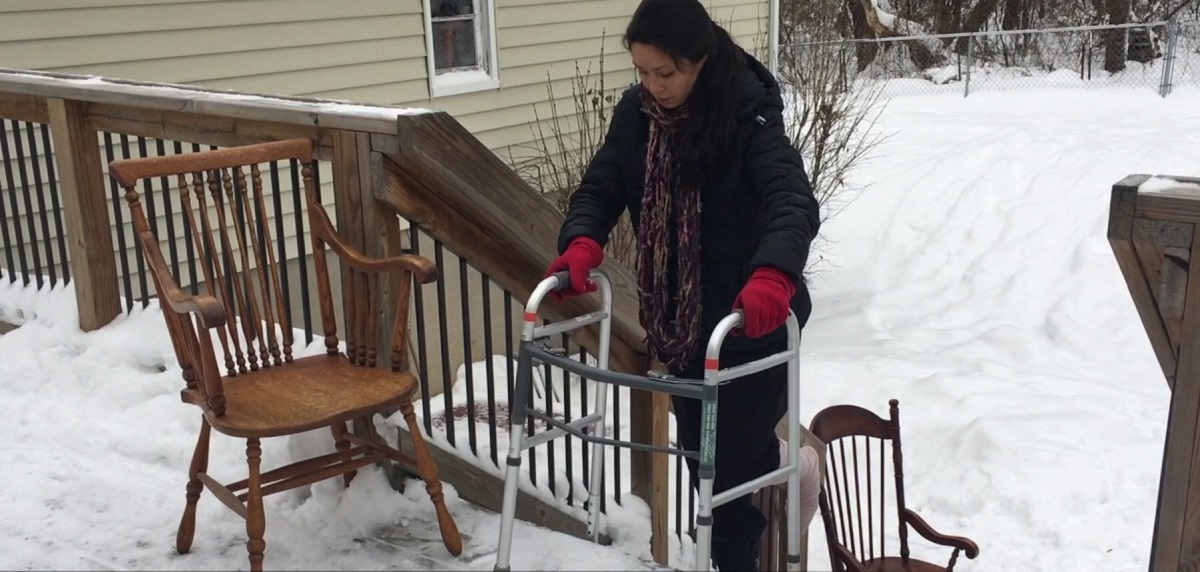
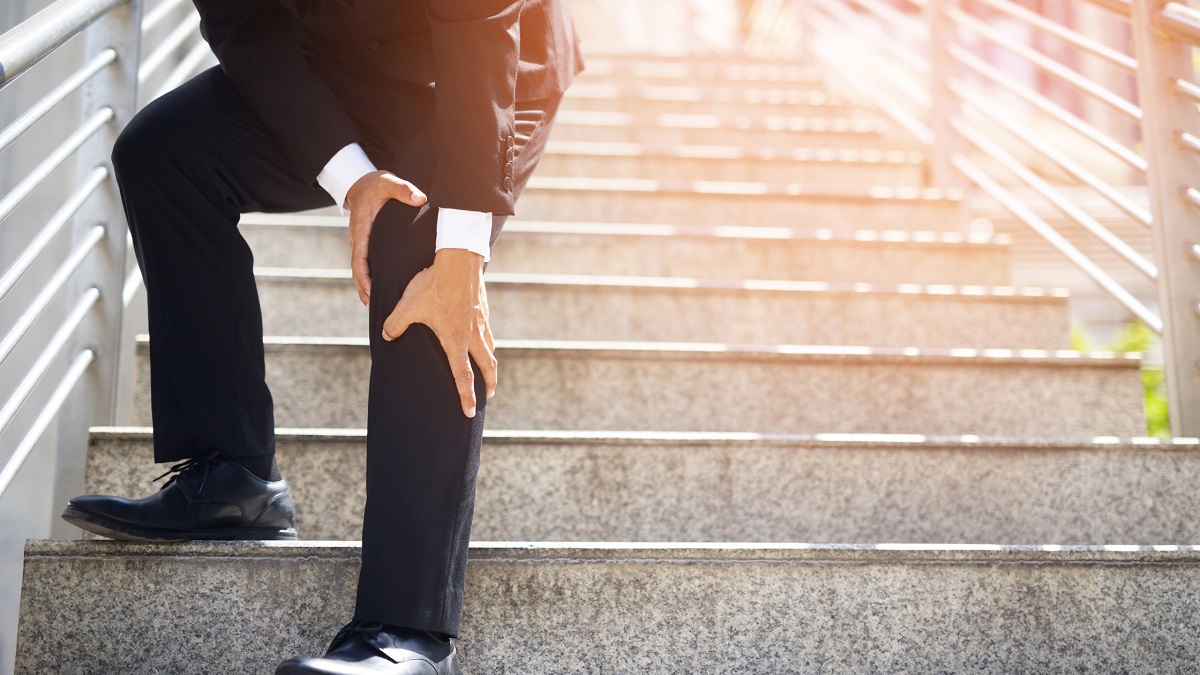
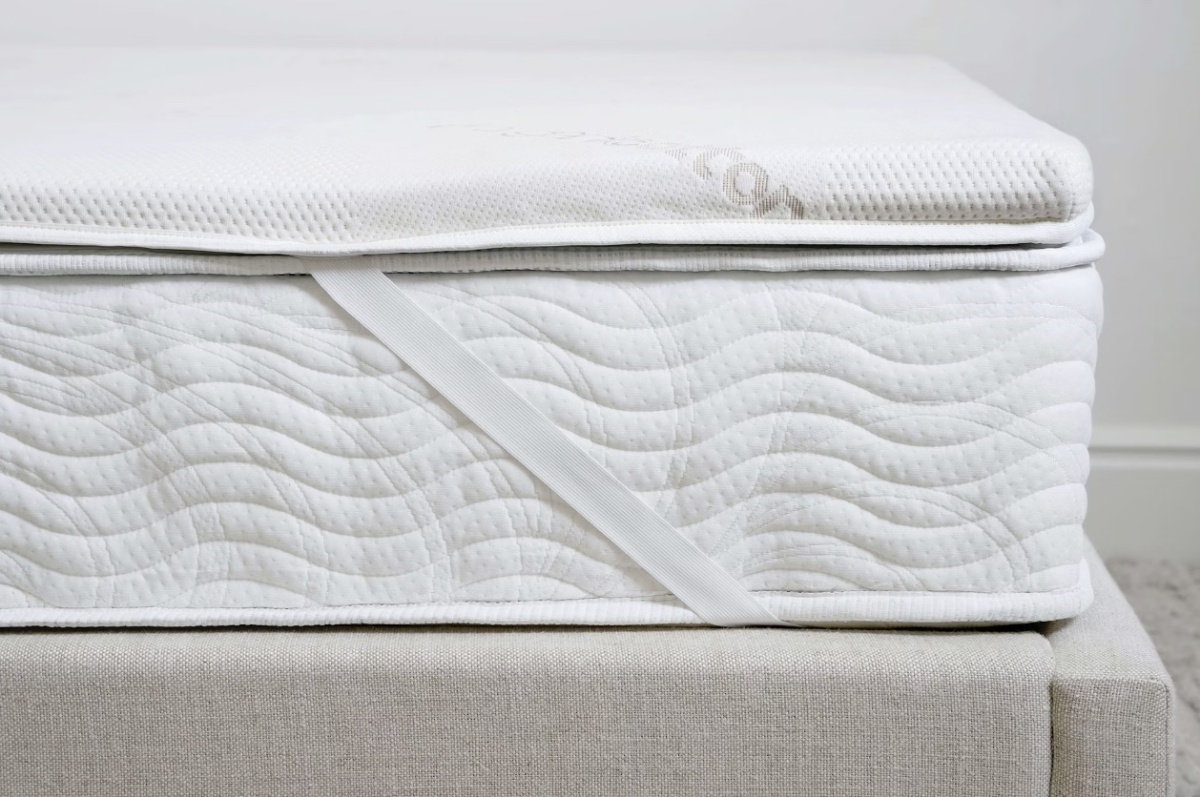
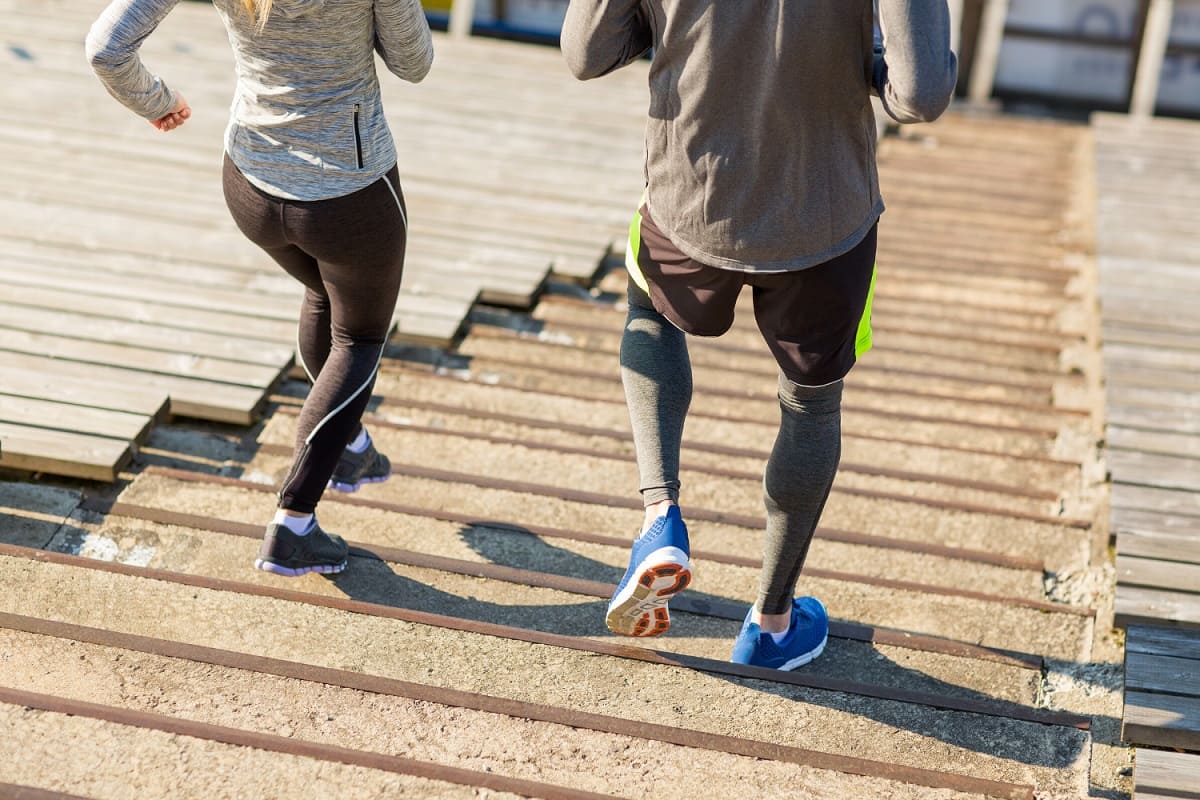



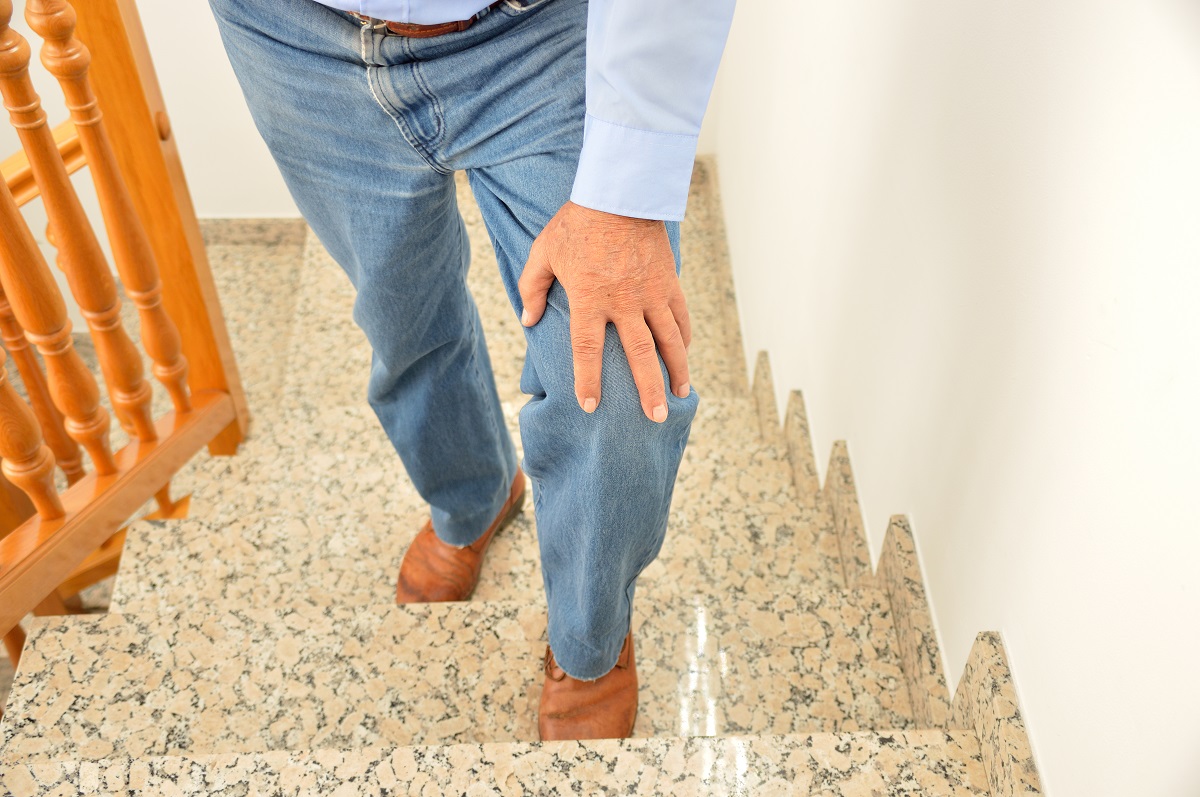


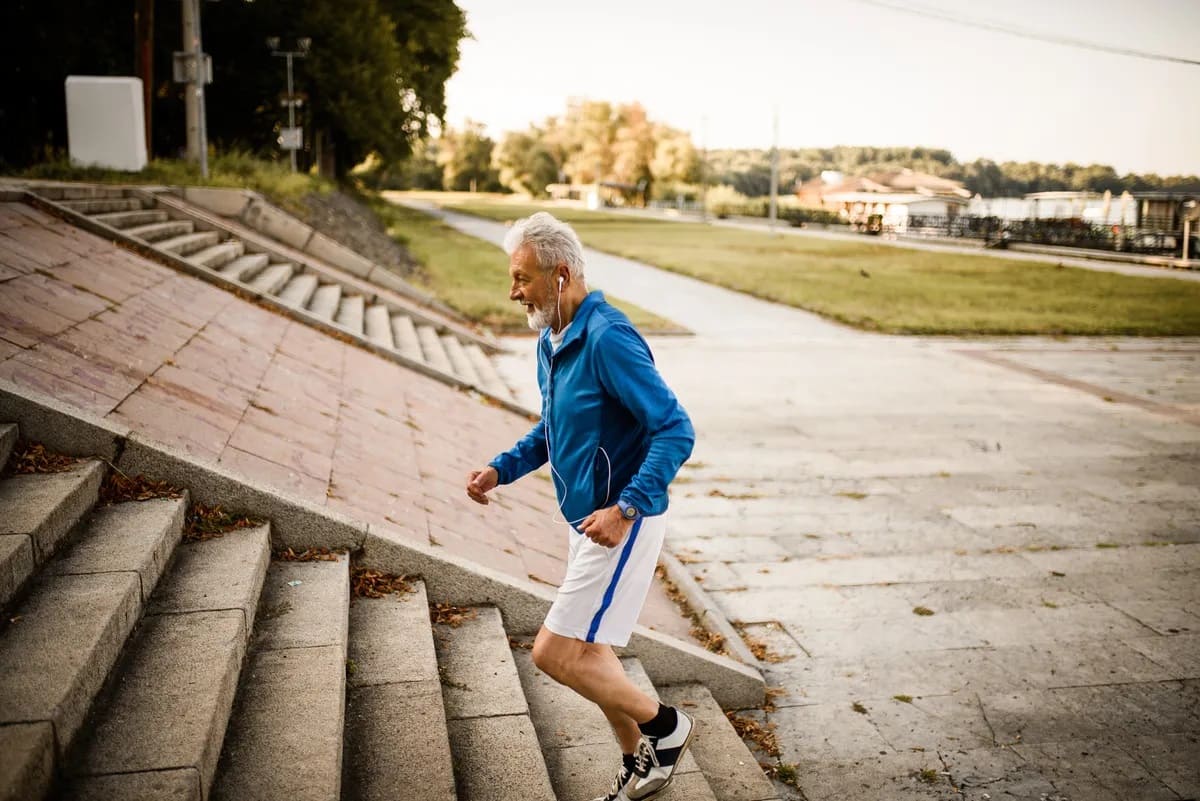

0 thoughts on “Hip Pain When Going Up Stairs”